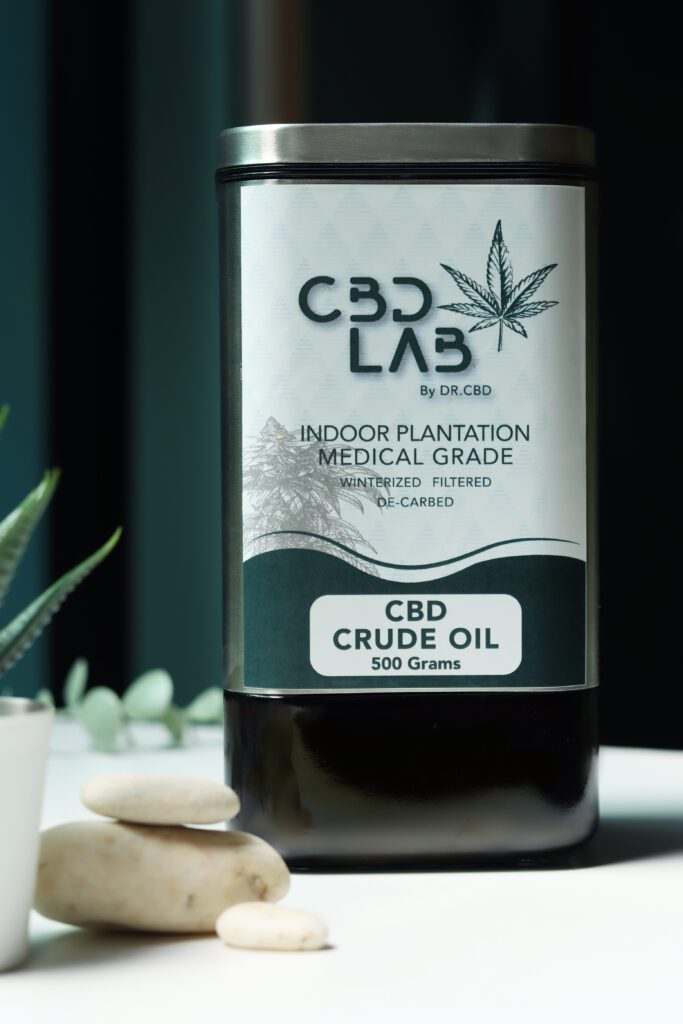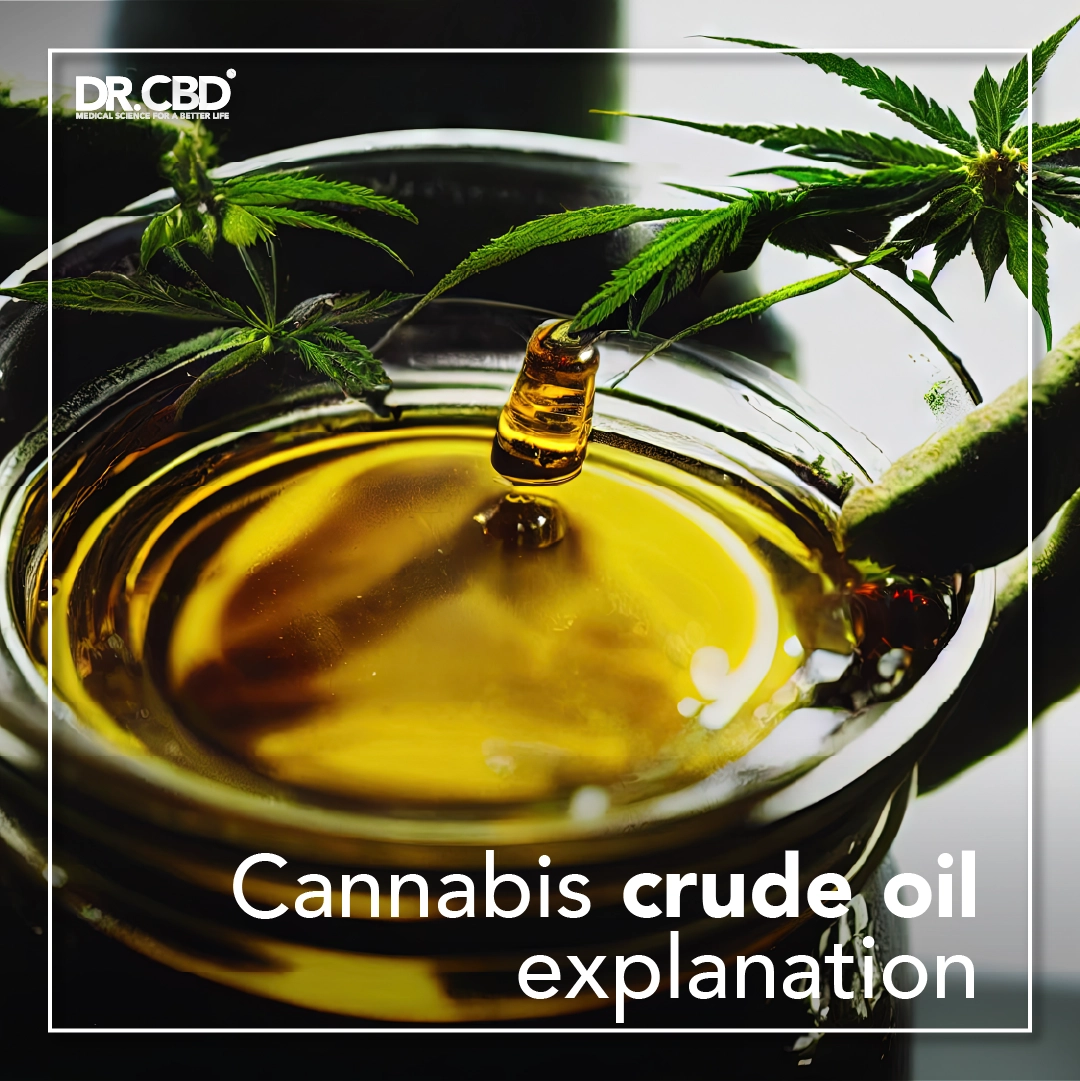Cannabis crude oil is what many people typically call the oil that’s produced during extraction because of the additional steps needed to refine the product. However, some extraction methods, such as hydrocarbon extraction using butane or propane, have essentially rendered this terminology irrelevant due to the high levels of refinement that occur throughout the extraction process itself, thus producing a “crude” oil that’s actually ready-for-sale.
Hydrocarbon extraction (also referred to as BHO extraction) processes have the unique ability to extract the most sought after compounds and leave out the bad-tasting ones, resulting in highly-refined “crude oil” that can be made into artisan-crafted extracts such as shatter, wax, live resin, sauce, budder, crumble, isolates, and more. Unlike other extraction methods, the hydrocarbon extraction can bypass multiple refining processes to produce an elevated and more refined extract.

What Is Crude Oil?
The term crude is associated with a form in its natural or raw state without having undergone any additional processing or refinement. Crude product forms appear in various industries, but perhaps the best analogy is the petrochemical industry. Offshore oil rigs obtain the crude oil needed to be refined into usable products such as gasoline, petroleum jelly, and many forms of fuel.
Petroleum refineries are in charge of transforming the dark brown and generally useless crude oil obtained from pipelines into its more practical parts for consumer products. During the oil refining process, the underlying compound structures are separated and purified through various distillation methods. The resulting oil from the earth can then be sold without more refining or can be refined into smaller molecules to create an even greater variety of products.
Similarly, during a cannabis extraction process, rudimentary resin oil is removed from cannabis or hemp plant matter such as buds, leaves, stems, and seeds and refined into more usable forms.
Solvents Make the Difference
The most common solvents used during cannabis extraction include carbon dioxide (CO2), ethanol, and butane/propane. Traditional “crude” oil made using CO2 or ethanol extraction requires further post-processing to be infused into products or ingested, hence, the “crude” terminology. Whereas, Dr. CBD uses Supercritical CO2 Extraction Methodology.
Highly-refined “crude” oil made using light hydrocarbons such as butane or propane cuts down on the undesirables and contains a full-spectrum of cannabinoids, terpenes, and other essential compounds. This oil contains a higher amount of the plant’s aromatic terpenes and flavonoids, as well as other essential compounds, and requires no further refinement. It’s ready to be added onto whole-flower or joints, used for vape cartridges, and topicals for localized relief.
Keep in mind that cannabis resin, also known as trichomes, largely reside on whole-flower buds, but a small number of trichomes can also be found in stems and leaves. Seeds can also contain some essential oils but without any cannabinoids.
Crude oil is essentially the cannabis resin (with varying chemical compositions) separated from the plant, one of the cannabis raw materials Dr. CBD provide. The amalgamation of trichomes can be acquired in a number of different ways. In the end, however, manufacturers want a potent and pure product while reducing the costs and improving the output of their production process. BHO extraction is the right solution for that.
How Is Crude Oil Made?
The differences in “crude” oil quality, color, and purity really come to light when we examine the different ways that cannabis resin can be extracted from the plant and the many ways it can be refined into a distillate, isolate, or full-spectrum product depending on the intended product.
Cannabis oil can be made using a variety of solvent-based or solventless extraction methods, each with its own pros and cons. Some of the most popular solvent-based methods occur with ethanol, carbon dioxide (CO2), and hydrocarbons (propane and butane) as solvents, which strip the plant from its resinous oils.
Solvent-based methods utilize closed-loop equipment in lab-grade environments to recycle the solvent and also minimize the risk of leaks to avoid harm to the technician. Ventilation and gas detection systems ensure everyone stays safe and there are no hiccups in the process. Closed-loop equipment, however, ranges in speed and quality.
Solventless methods like dry sifting or pressing raw or frozen cannabis or hemp are used to avoid introducing solvents into cannabis. Solventless methods break off the trichome bulbs from the plant’s surface using agitation, heat, and pressure.
Various sizes of mesh screens are used to separate trichomes and make dry kief, which can later be formed into hash slabs or balls for smoking purposes. Commercial rosin presses can be used to apply heat and pressure onto raw marijuana matter and squeeze out its viscous and gooey insides without the need for closed-loop equipment, however the throughput is typically too low for commercial production.
With solventless methods, extraction companies still have to perform a solvent-based extraction process to produce the concentrated oil and may need to remove the undesirable plant matter from the mix.
Each type of extraction process produces a different type of cannabis oil with varying levels of purity. CO2 and ethanol are efficient solvents used to remove cannabinoids and terpenes from the plant, but can also unintentionally bring in plant waxes, lipids, and chlorophyll during the process, which requires additional post-processing time and cost to remove.
With hydrocarbon closed-loop equipment using butane and propane, however, the cannabis oil produced doesn’t have nearly as much wax, fat, or chlorophyll compared to CO2 or ethanol extraction, but has even more total cannabinoids and terpenes.





